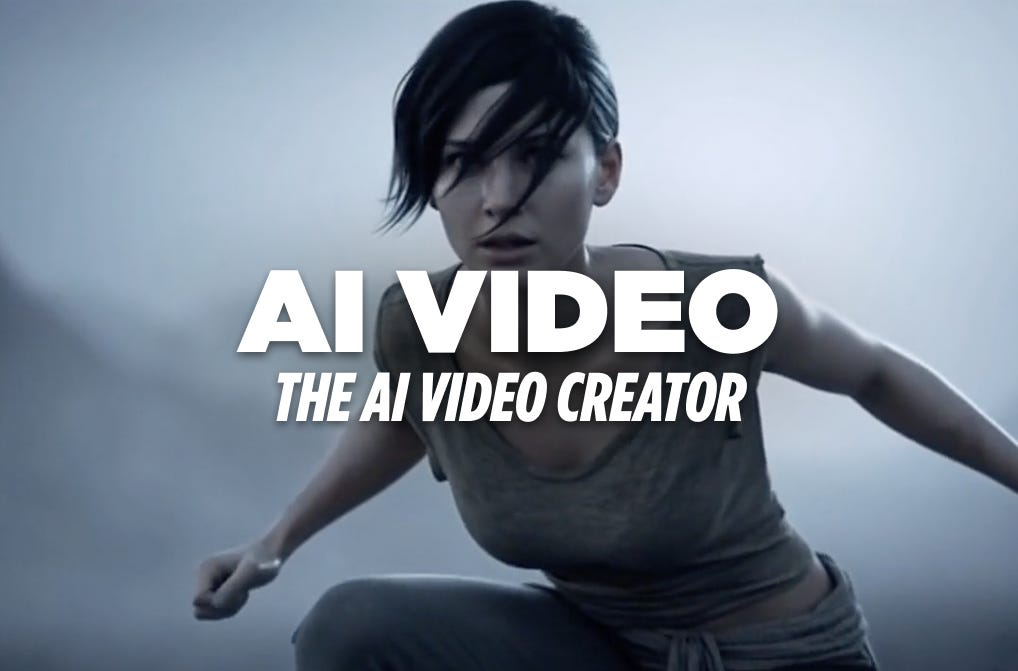How to use Sora 2 for full scene control in your AI Video
Sora 2 is great for two types of prompts: Quick brainstorming vs full scene control
I was wrong.
OpenAI has released Sora 2 on the web, and its true power has been revealed. It’s a tool that can be wielded with the precision of a scalpel, not just the randomness of a slot machine. The key is knowing how to talk to it.
Sora 2 can go both ways. You can give a generic prompt and let the AI make all the decisions, or you can specify what you want. Let’s break down both methods.
(I still hate the fact that OpenAI pushed for a social media platform. But I get it. I understand why they are doing it.)
The two ways to prompt in Sora 2: Chaos vs. Control
After extensive testing, it’s clear Sora 2 operates in two distinct ways. It’s good, like, Veo 3 and Seedance combined good, at both, but only one gives you true creative power.
I tested these prompts with the tool on Higgsfield. It allows for very long prompts, and the UI is great.
1. The “Generic” Prompt: The Slop Machine
This is the initial approach OpenAI showed us. You give Sora 2 a high-level idea, a vibe, and a few keywords, then let the AI fill in the blanks. Don’t get me wrong: It’s fantastic for brainstorming or when you need a cool visual fast, but the results are unpredictable.
Here’s a generic prompt I tested:
A sci-fi dusty movie trailer of future gladiators with robotic arms fighting in cyber arenas. Use the style of initial image, fast-paced editing, multiple cuts, to achieve a futuristic mystical mood. Include background sounds to match the tone, as well as a dramatic narrative voiceover. Close the trailer with a ‘coming soon’ text and include THE movie title “THE GRIND”
The result is a slick, professional-looking trailer. Sora 2 makes all the creative choices on shot selection, pacing, and character design. It’s impressive, but it’s not my vision.
2. The “Specific” Script: For total creative control
This is where Sora 2 becomes a revolutionary tool. By structuring your prompt like a screenplay or a shot list, you can dictate the exact composition, timing, action, sound, and visual effects of your scene.
I used to think prompting a full scene was a gimmick that ceded control to the AI. But with this level of detail, you’re not prompting; you’re directing.
Take a look at this structured script.
Setting: Grey wasteland with ghostly grey mists, no trees, no plants.
Subject: Model — sci-fi female scavenger, white skin, black hair, side-swept bangs, ragged t-shirt, muscled arms.
Lighting: Desaturated moonlight, fog backlit with pale silver tone.
Vibe: sci-fi gladiatorial fight.[00:00–00:03] Close up of the foot of a robotic warrior crushing a grey rock on the ground. Model can be seen in the distance, facing the newcomer robot.
SFX: deep suspense Braam.
VFX: fog pulses, glimmers with ash.[00:03–00:05] Fast zoom in through the mist: grey smoke vanishes at frame edges as it glides toward the face of the model, kneeled in the wasteland in combat position. She snaps her head sharply toward the lens, nostrils flaring.
SFX: deep tribal drum, low growl.
VFX: fog pulses, glimmers with ash.[00:05–00:07] Tracking dolly of the face of Model as Model begins to move, a charge against the robotic rival.
SFX: warped violin string pull, crunch of ground.
VFX: eyeshine flicker, hair snaps with motion blur.[00:07–00:08] Cut to medium slow-motion side shot: her fist begins to grow robotic glowing circuits, embers crawling up the threads.
SFX: circuits ignition + violin shriek over distant drum hit.[00:08–00:09] Cut to medium slow-motion close up shot: her body begins to grow robotic glowing circuits in neck and chest, embers crawling up the threads.
SFX: circuits ignition + violin shriek over distant drum hit.[00:09–00:10] Cut to medium slow-motion frontal shot: the head of the robot has a lone red eye, it starts to glow with intensity.
SFX: glowing red eye + violin shriek over distant drum hit.[00:10–00:12] Cut to wide slow-motion lateral shot: the silhouettes of Model and robot can be seen in fast motion as they are about to crash, high contrast. Text overlay (glitch reveal, sci-fi style, big bold type): “THE GRIND.”
SFX: heartbeat glitch cut, final drum slam.
The difference is night and day. It’s a lot of detail in the prompt, but Sora 2 was able to integrate a lot of the design requirements, timestamps, camera movements, and sound cues. This isn’t just generating a video; it’s executing a production plan.
How to write your own cinematic prompts
Ready to direct? Here’s how to structure your prompts for maximum control:
Set the Scene: Start with global descriptors like Setting, Subject, Lighting, and Vibe. This gives the AI a consistent world to build in.
Use Timestamps: Break your scene into timed segments (e.g., [00:00–00:03]). This is the most powerful feature for controlling pacing and cuts.
Specify Shots and Action: Be explicit. Use filmmaking language like Close up, Tracking dolly, Fast zoom in, and wide slow-motion lateral shot. Describe the action within that shot precisely.
Direct the Audio and Visuals: Use SFX: (sound effects) and VFX: (visual effects) to layer in the details that sell the scene, from a deep suspense Braam to eyeshine flicker.
By adopting this structure, you shift from being a passenger to being the pilot. The tool’s potential is immense, but only if you’re willing to move beyond simple sentences and learn to write for the screen.



